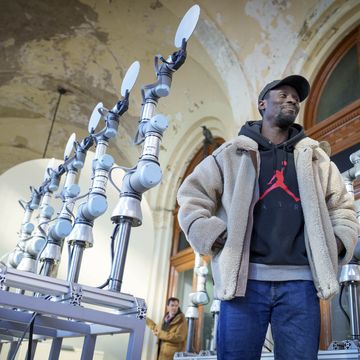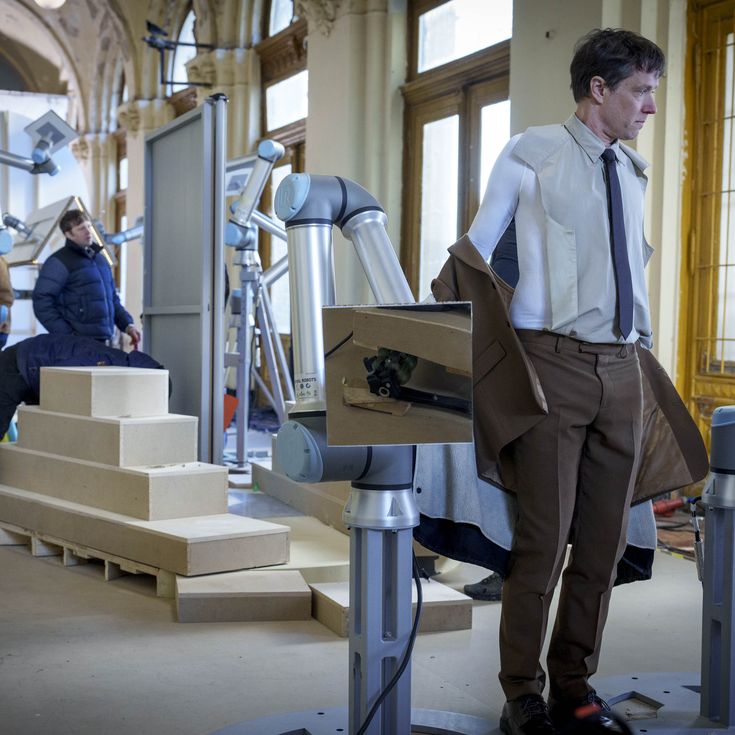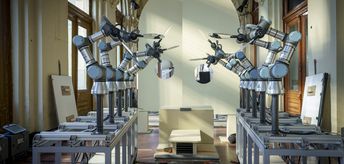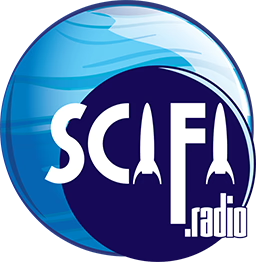It’s undeniable: Today’s a very big one. Two things are out RIGHT NOW: 1. And the Adjacent Possible—the first new OK Go album in a full TEN YEARS. (Whoa.) 2. Love—the second new OK Go music video in just THREE MONTHS. (Also whoa—but to the opposite end. We’re keeping busy these days.) We’ll let you do your thing. Listen, watch, et cetera. Re-listen, re-watch. Perhaps like, save—maybe even share? Dunno. Follow your instincts. We trust you. We’re so happy you’re with us—and we can’t wait to hear whatcha think about it all. Let us know down below.
OK Go’s first album in TEN YEARS, The Adjacent Possible, is out now, It’s been a while. This is, however, their second music video in three months. Watch the amazing Love, where the band members perform surrounded by 29 precision controlled industrial robots, all synchronized to the beat, 63 mirrors, 3 directors, and 130 collaborators, all to make one single take music video.
Take 39.
“We had two days for shooting,” says Miguel Espada, co-director of OK Go’s video for the song Love. “After a day and a half, we still hadn’t managed to complete a single full take from start to finish.”
Inside the cavernous Budapest train station, over 60 people from 10 countries were scrambling to bring to life a single-shot music video unlike anything the band had done before. At its heart was a concept built on mirrors and infinite reflections. “The main idea behind the video was to use mirrors to create different visual effects. The concept revolved around multiplying reflections as a metaphor for love,” says Miguel. “The infinite reflections illustrated the love one feels for family and children.”
But those reflections needed to be precise. “To achieve an infinite reflection, a reflection of a reflection of a reflection, it’s enough to place one mirror in front of another. But if those two mirrors aren’t perfectly parallel, the reflections curve and ruin the illusion,” he explains. “Achieving that level of precision with traditional analog methods wasn’t viable. We also wanted the effects to be dynamic. The mirrors needed to move and change shape. Robots were clearly the best choice.”
The band had already decided to use robots before Miguel joined the project. “When the band started thinking about the various tricks that could be done, they realized they needed to control the mirrors’ position with great precision. That’s when robotic arms came into play.”
The co-directors, Damian Kulash, Aaron Duffy, and Miguel, ran several workshops to conceptualize the scenes. “First just with robots in Los Angeles, and then with robots and mirrors at the Universal Robots showroom in Barcelona.”
Miguel had worked with Universal Robots before. “For me, choosing UR robots was a no-brainer. I’ve worked on several projects with them over the years and know their versatility and ease of use very well.”
When I introduced UR robots to OK Go, the band immediately understood they were the perfect fit for this project.
– Miguel Espada, co-director of OK Go’s video
From Python to Beats Per Minute: The code behind a robotic choreography
Ease of use was key. “Within minutes, I was able to teach the entire team how to use the ‘teach mode,’ so everyone could move the robots by hand and teach them positions and paths,” he says. “The band was blown away by how easy they were to use.”
As a fun anecdote, Miguel adds, “When Damian wanted to move a robot he always asked, ‘Enable the touchy-touchy mode.’”
But the ease of programming was only part of the story. The ability to work safely around humans was just as critical. “Combining robots, mirrors, and people is potentially dangerous, and Universal Robots are built to the highest safety standards,” Miguel notes. “That was a key factor. On a set with moving mirrors and people passing through narrow spaces, we needed to know the technology wouldn’t pose a risk.”
“We had to sync over 30 robots to the music with absolute precision.” The team used advanced programming via UR’s real-time control protocol (RTDE). “We reprogrammed our control software to work at the same BPM as the song. Normally, animations are run at 30, 50, or 100 frames per second, but in this case, we synced everything to 78 BPM.”
Their system had two layers. “A controller written in Python that launched about 30 threads, one per robot, and an OpenFrameworks (C++) layer that orchestrated all animations.”
Miguel says they initially hoped to pre-program everything. “That idea completely fell apart once we faced the reality of an OK Go shoot. There were so many unexpected elements that we had to keep adjusting things up until the very end.”




Engineering a kaleidoscope
“There’s a scene where a kaleidoscope forms around Damian’s head. It looks simple, but it shows just how complex the setup was behind the scenes. The mirrors had to arrive at precise positions at the same time as Damian, while leaving space for the camera and part of the art team to pass through. It was like a puzzle made of all these elements.”
A full animatic had been created in advance, but new ideas emerged throughout filming. “Once we were on set, aside from solving a huge number of technical issues, we also came up with new ideas and effects to try. So it was definitely a process of iteration right up until the last moment.”
“We had tested individual scenes, but never the whole sequence,” Miguel says. “The hardest part was the transitions between scenes. Not just the band, who were on camera, but the camera crew and art team also had to coordinate perfectly.”
Even choreography became a shared effort. “Many times, programming was a collaborative process across departments, and that’s where the collaborative nature of the robots really stood out. Often, key positions were defined by hand and then transferred to the overall timeline.”
There were creative discoveries too. “There’s one scene that was actually choreographed by a human choreographer, and it took us some time to understand that robotic arms don’t move the same way humans do. It wasn’t a limitation. It just required an iterative process to explore the expressive potential of the robots.”
As the final takes approached, the team kept adjusting. “We had to make lots of adjustments between takes, but those tweaks took seconds, not hours.”
The final take
Finally, it all came together. “Fortunately, everything came together on take 39.”
Asked whether they worked with UR engineers, Miguel says, “We’ve worked with UR for a long time, both with the Barcelona office and HQ, and we have deep knowledge of their programming environment. The documentation is very comprehensive, but in every project, something unexpected always comes up. We usually get in touch with an engineer from UR to clarify things. Over all these years, we’ve never had a problem we couldn’t solve.”
Looking back, Miguel says, “For us, it would’ve been impossible to do this project any other way. I had experience working with these robots and complete confidence they would perform well. And I conveyed that to the band, to Damian, and to Aaron. We knew it was going to be a complex process, but I was 100% sure the robots would do their job. The only ones who never mess up a take are the robots.”
Lyrics:
Light cast so long before sound, before song
falls on your eyes and the dance starts again
And in this grand ballroom of nothingness
your hand so warm with somethingness
we whirl and twirl and music’s invented again
In this grand ballroom of nothingness
we soar, we sail to the only song there’s ever been: Love
The only song there’s ever been’s just begun: Love
The only song there’s ever been plays again: Love
It’s love
How marvelous just to be anything,
circling the hall to divine harmony
And in this grand ballroom of nothingness
your hand so warm with somethingness
we swirl, unfurl, and music’s invented again
In this grand ballroom of nothingness
we soar, we sail to the only song there’s ever been: Love
The only song there’s ever been’s just begun: Love
The only song there’s ever been plays again: Love
The only song there’s ever been never ends: Love
And against such staggering odds of anything at all
that lonely poet Chance called the dance and built the hall
and, with such modest hands, drew up plans and gave us all
Love
And if you want to see what it looked like behind the scenes as they were shooting this technological marvel, we have that for you too.
Get this song: https://sym.ffm.to/andtheadjacentposs… And all things OK Go: https://linktr.ee/okgomusic
![]()
SCIFI.radio is listener supported sci-fi geek culture radio, and operates almost exclusively via the generous contributions of our fans via our Patreon campaign. If you like, you can also use our tip jar and send us a little something to help support the many fine creatives that make this station possible.













I watched the video/listened to the song before I read this article. I thought this music combines elements of late 1960s, 1970s, 1980s, and modern day.
I also thought something like, “There’s no way this video could have been made even a few years ago. The duplication of the same person, and the use of mirrors, couldn’t work that precisely.” Then I read the article….
At the beginning of the ending, I thought, “I don’t like this ending. Just end with the song.” But then I saw where they went–it completely fit the song! Good choice.